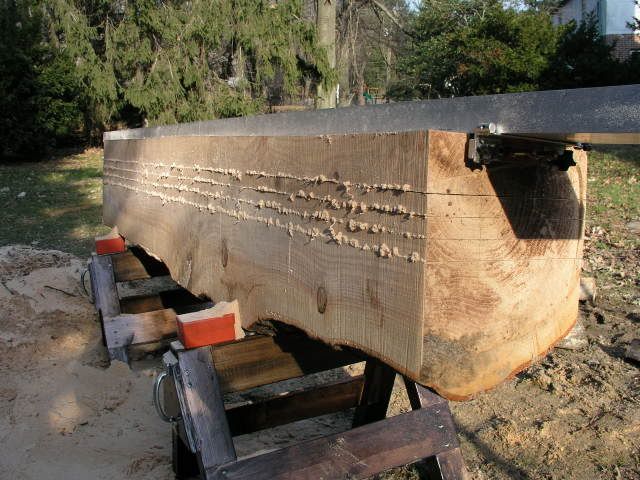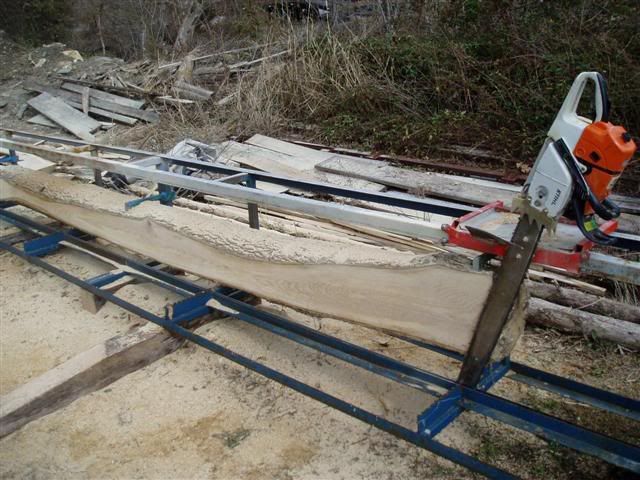No offence intended towards ya slabmaster, but from my experience, and many a sawyer I've talked to over the years, there is little "truth" in any of what you state above. I don't know... maybe where you come from folks don't know how to set up a bandmill (tension, alignment) so the blade doesn't wander as much as you say it does, or produce that "wagon tongue" even in knotty difficult logs. If you have to "beat your planer to death" correcting the "unevenness" of bandmilled lumber, there is something wrong with the bandmill. I've milled thousands of feet of all kinds of wood mostly with my little handheld Ripsaw bandmill, but also with a csm. On average, my worst bandsawn boards are usually better than my best chainsawn boards as far as smoothness of the board. Thus the chainsawn boards usually take MORE passes through the planer than the bandsawn boards to get down to S4S for the woodshop, not less as you say. That's on top of taking a quarter inch of kerf to begin with. Not trying to pull anybodies chain (pun intended

) , but in my humble experience, you got the bandsaw/chainsaw mill thing backwards. A properly set up bandsaw mill will cut more boards, and IN GENERAL smoother ones than a chainsaw mill. If you look close at how the rings line up in the end of this log, and thus how little kerf was taken for these 4 cuts, you can see what I'm talking about.
btw, I understand not everybody wants or can justify the cost of a large cast iron planer, but if you're using one of those lunchbox portable planers to turn roughsawn lumber into S4S dimensioned lumber, you better take it easy. They're just not designed to have hundreds of feet of rough lumber run through them. You'll end up beating the bearings to death and wearing those universal motors out quick if you're gonna do that all day long.





 I'm sure others will disagree. If I had a WB available at a reasonable price, I would own it!
I'm sure others will disagree. If I had a WB available at a reasonable price, I would own it! THat's why i use a csm over a bandmill.I'd rather have a little more sawdust on the ground than beating my plainer to death trying to correct the uneveness of the bandmilled lumber.Mark
THat's why i use a csm over a bandmill.I'd rather have a little more sawdust on the ground than beating my plainer to death trying to correct the uneveness of the bandmilled lumber.Mark


